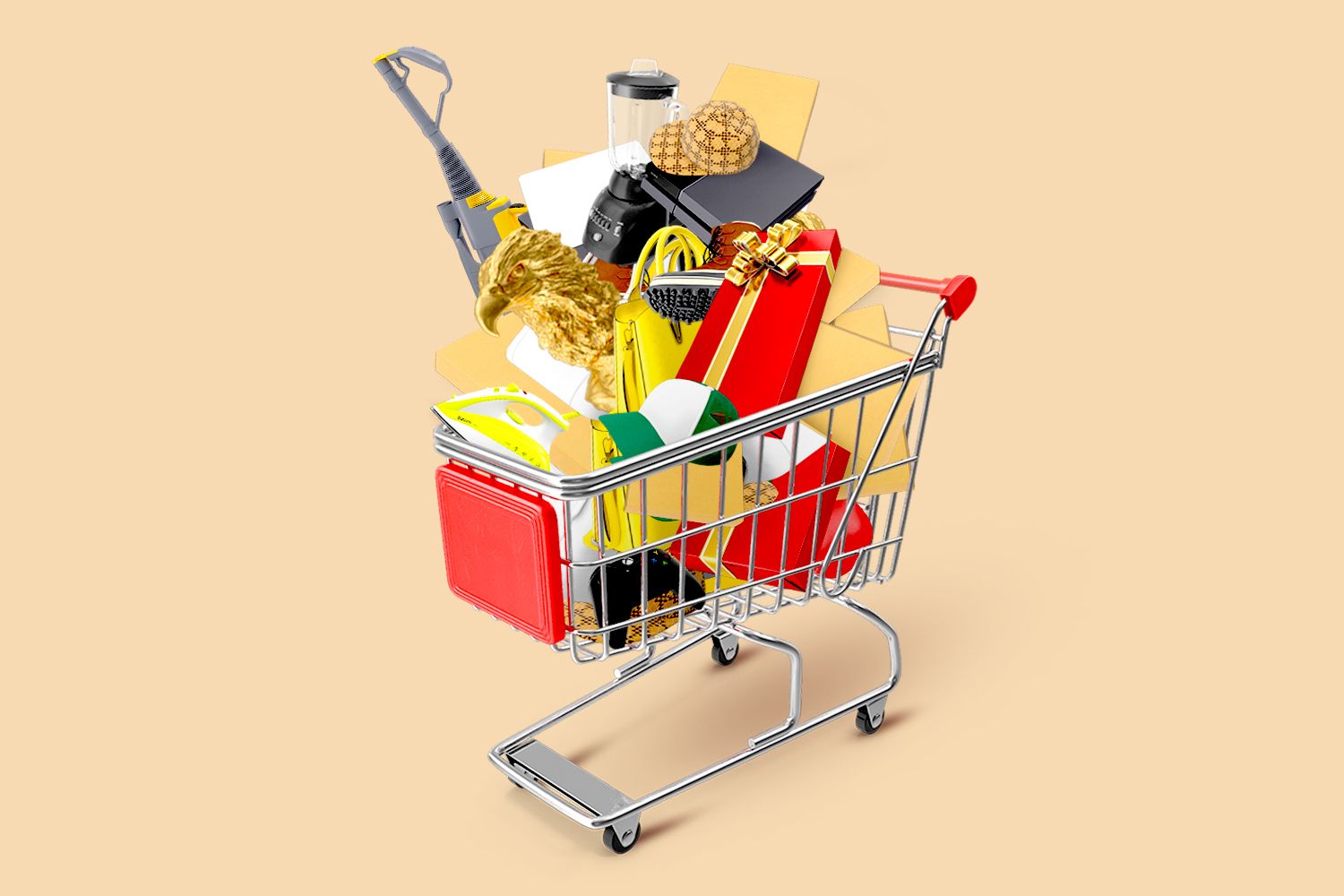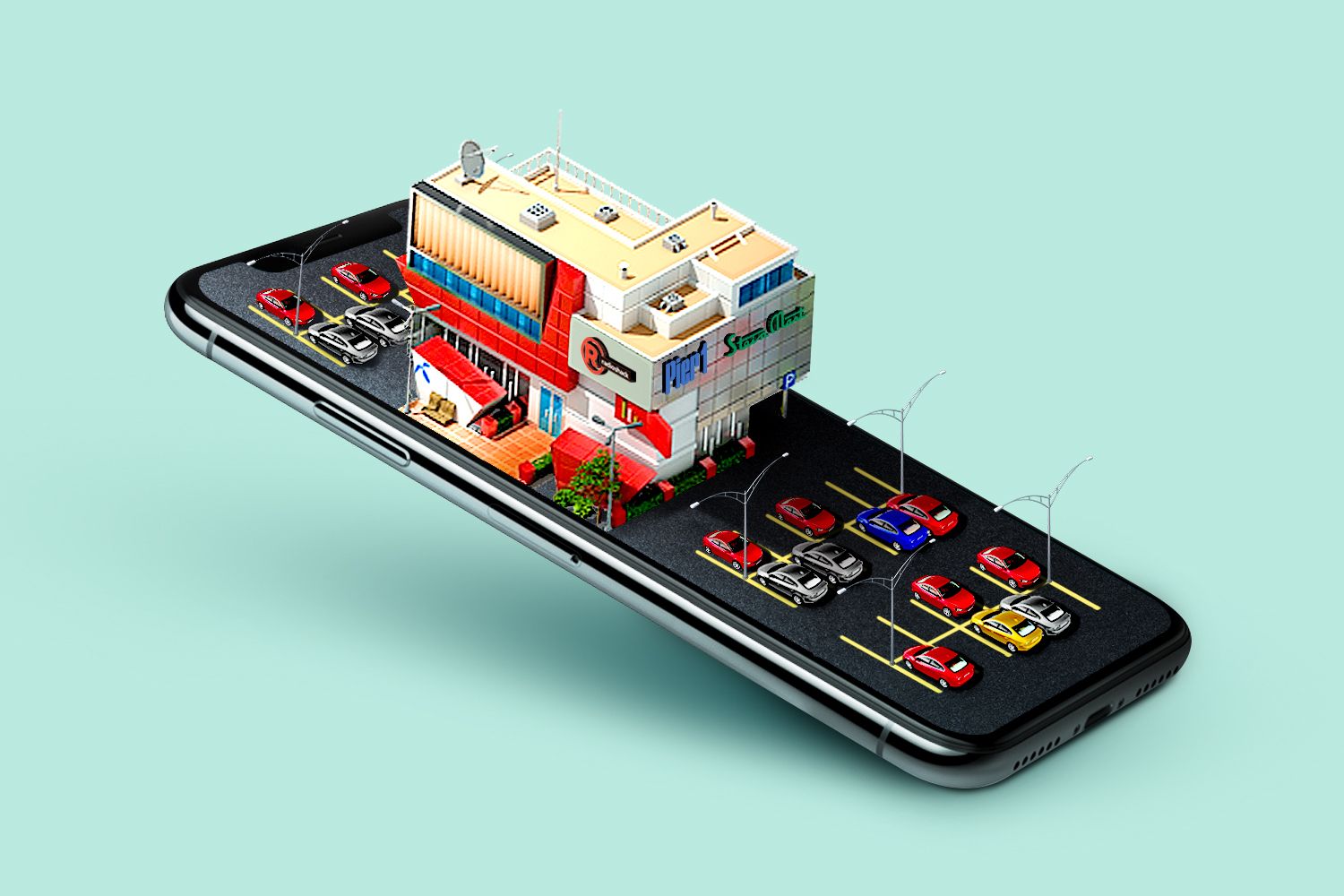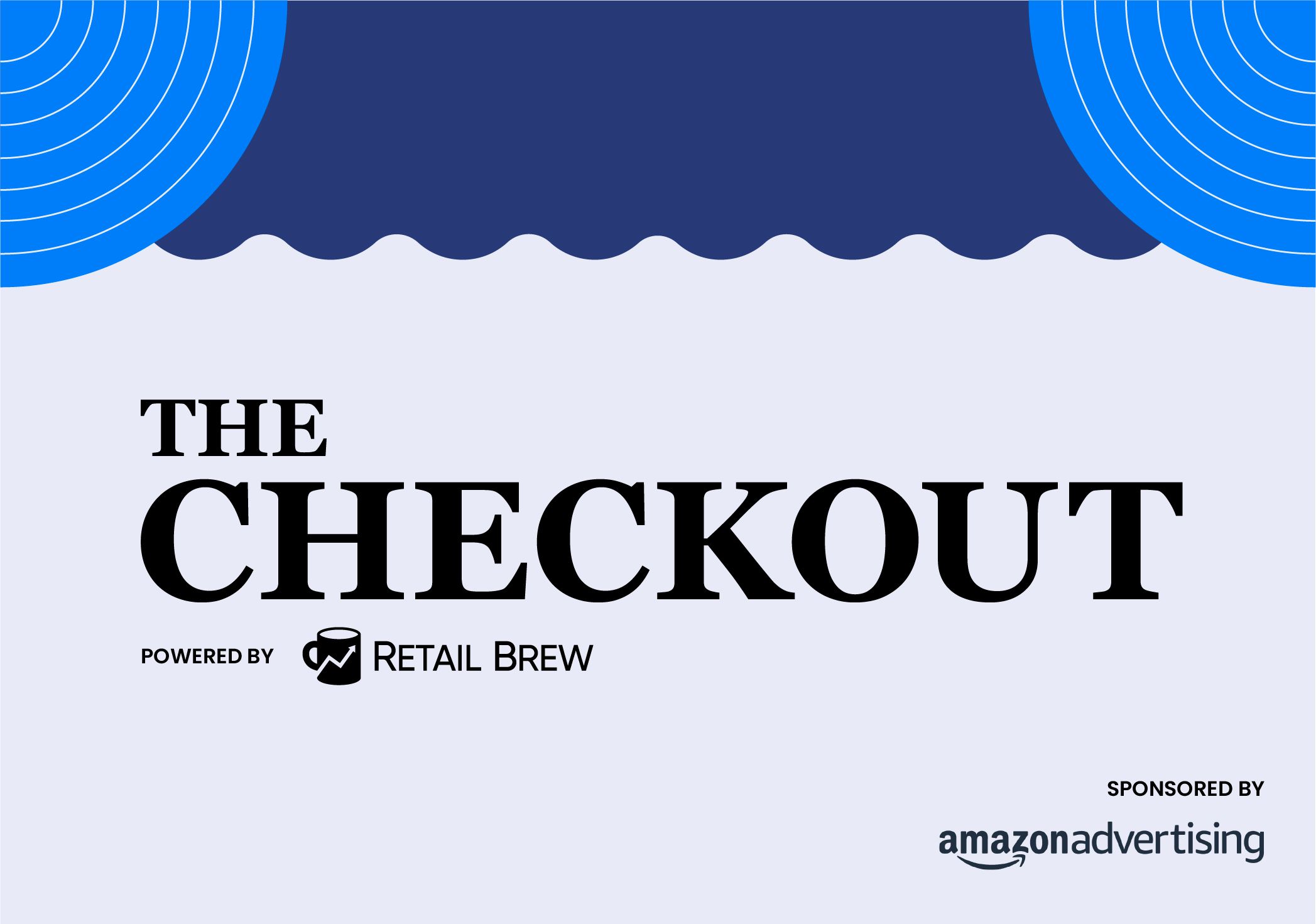Hey there. We hope you had a nice weekend. But if it wasn’t all that eventful, no worries—that’s why we’re here. Retail Brew’s conversation with PepsiCo’s Emily Silver is tomorrow at 12pm ET. Sign up here to learn how a product comes to be and ultimately ends up on store shelves.
In today’s edition:
- Supply chains could dampen holiday spirits
- The trends driving retail tech investments
- A CBD gumdrop brand navigates a crowded market
—Jeena Sharma, Julia Gray
|
|
|
Francis Scialabba
Ok, we’ll admit that we haven’t bought a pumpkin to carve for Halloween—but we might pick up a Christmas tree first.
Blame the supply-chain crisis, which has escalated throughout the pandemic: “Many thought by the 2021 holiday season, things would be better. Unfortunately, they continue to worsen,” Chris Palmer, founder and CEO of SupplyKick, which optimizes sales for sellers on Amazon, told Retail Brew.
“Delays in receiving times and supply chains will make it nearly impossible for brands and sellers to keep the right amount of inventory in stock,” he added, meaning a Black Friday–ish shopping rush and sold-out stickers across the board.
Which brings us back to Christmas trees.
“People should expect empty shelves and very high prices if they wait until Thanksgiving (the typical shopping window) to purchase their holiday decor,” Chris Butler, CEO of National Tree Company, told us. “There will be incredibly high demand...this year because people have money to spend,” he said. “Last year was a bust due to Covid.”
-
Retailers are upping artificial tree prices by 20% to 25% to keep up with expensive shipping costs, according to the Wall Street Journal. (And following a similar pattern to last year.)
By the way: Things aren’t that much better for those who want to buy the real deal. While warm weather was encouraging for tree farmers, the heat wave and seasonal droughts meant 10% to 20% of supplies were affected in some way for major growers.
The most wonderful time of the year?
One option for retailers, SupplyKick’s Palmer noted, is to push discounts earlier “to get ahead of anticipated shipping delays”—which will only get worse as we approach the holidays.
- Shoppers might embrace BOPIS even more fervently, he added, to do the same.
What’s next: Supply bottlenecks and shortages have left little in retailers’ control, but last year proved to be somewhat of a learning curve for businesses, according to Nikhil Mitter, group creative director of ad agency R/GA.
He believes more retailers are now investing in “advanced, real-time” software to manage their inventory and are working closely with suppliers to stock stores as quickly as possible. (Costco’s CFO said in an earnings call last week that the retailer is “ordering as much as we can and getting it in earlier.”)
And while some empty shelves might be unavoidable, the key for retailers is to communicate with shoppers.
“Once [customers] have committed to buy a product or service, it’s important not to lose them because of a lack of availability or fulfillment delay,” Mitter explained. “Be transparent with every follow-up interaction, making them feel involved in the process.”—JS
|
|
|
Francis Scialabba
Retail tech funding is reaching new heights: It’s expected to top $80 billion this year globally, per CB Insights, the market-intelligence platform. Where is the $$$ flowing? And why? The firm talked trends in a presentation last week.
For one: Execs have their eyes on inflation, and are looking for new tech to weather wavering prices. Think: inventory and consumer tracking systems and electronic shelf labels.
- Mentions of “inflation” and “retail” on earnings calls spiked to 30 in Q2, up from just four mentions in 2020, CB Insights noted.
“You’re going to need technology that helps optimize pricing and track inventories because people are going to be…buying different products across different categories as prices change,” Senior Lead Analyst Laura Kennedy said during the webinar.
Come in: In-store tech funding is on track to double this year—to around $8 billion—as retailers experiment with new, focused store formats. “Part of this is because of the return to stores...the holiday season coming up,” Kennedy added.
Roll out: The Amazon roll-up companies keep comin’ with about $3 billion in funding this year so far. “When I see that about three-quarters of the deals are to early-stage companies, that tells me we have a lot of new entrants coming in,” Kennedy explained. “Is it possible for all of these companies to survive? I’m not sure, but it’s going to be an area we continue to watch.”—JG
|
|
|
|
As the seasonal shopping frenzy approaches, brands should know that Lexer’s 2021 Retail Holiday Guide was created to help you get ahead during the most wonderful—and biggest promotional—time of the year. Because big promotions require big planning.
E-commerce will likely continue to dominate, and Lexer’s 2021 Retail Holiday Guide can help you capitalize on it with nine personalized marketing campaigns. These include:
- New customer rewards
- Retargeting for last year’s buyers
- Social campaigns for opted-out customers
- ~And more~
For example, two-thirds of lapsed customers are either unsubscribed or not checking marketing emails. So how did one Lexer customer use their Customer Data Platform to still reach this group? By making them addressable in other channels for a whopping 600% ROI.
There’s a reason brands like Beautycounter, Supergoop!, and Sur La Table partner with Lexer. Safe to say, they know their stuff. Want to learn more? Download Lexer’s 2021 Retail Holiday Guide here.
|
|
|
Molly J.
Shaina Kerrigan founded Molly J., a CBD gumdrop company, in January 2020 to make cannabis more approachable for newbies. She spent nine months in her kitchen coming up with a recipe that didn’t feel “medicinal,” but still responded to consumers’ woes.
- For example, Molly J. released a sleep gumdrop during the pandemic as people struggled to catch Zzzs.
It’s a tricky, crowded space. “When the federal government passed the Farm Bill in 2018, it was this boom, somewhere in the range of 3,000 CBD businesses,” Kerrigan recalled. “A year and a half later, we’re down to 1,500 or so.”
So how does a small business like Molly J. set itself apart?
Stay focused: While some CBD brands want to offer a little bit of everything (bath bombs, chocolates, tinctures), Kerrigan said that approach can be risky.
“When you spread your efforts across so many different products, it’s harder to go deep in the quality of any one of them...We’re hyper focused on doing one thing and doing it well: highly effective CBD confections,” she noted.
Gray area: Kerrigan also has to focus on navigating regulations. Because of “changing policies and nebulous rules” around CBD, Molly J. has had to change its website platform four times and was once banned from Facebook, she said.
“Any new space is a challenge to launch in, but CBD in particular, has the added weight of being in a legal gray area that makes it frustratingly more difficult than it should be,” Kerrigan said.
-
Molly J. leaned on its community and fellow brands, which were “going through the ringer alongside us.”—JG
|
|
-
TikTok parent ByteDance will reportedly introduce a cross-border e-comm app next month.
-
Estée Lauder is entering the luxury fragrance space with a new scent collection.
-
Walmart has ditched its layaway program in favor of a buy now, pay later option.
-
Amazon will soon start charging Prime members for Whole Foods deliveries.
|
|
Today’s top retail reads.
Hard sell: “Girl, have I got a business opportunity for you”: How MLMs pounced on the pandemic. (Vox)
Clean sheet: Ecofriendly toilet paper startups want to dispel the notion that TP has to be white. (Quartz)
See this: The success of C2C marketplaces doesn’t mean change isn’t coming. (McKinsey)
Tune in: What do major brands including Big Face, Bombas, Lounge Underwear, and Mented Cosmetics think about the future of commerce? Find out at Shopify's Commerce+ livestream event on October 13. Register for free today.*
*This is sponsored advertising content
|
|
At the mall, it’s where band tees are the only tees. In Retail Brew, it’s where we invite readers to weigh in on a trending retail topic.
As we mentioned a few stories ago, supply-chain issues are throwing a wrench in retailers’ holiday plans. One strategy is to get customers spending sooner—even port directors are advising people to think ahead—but last-minute shopping could be a tough habit to break. (A Chain Store Age study from August showed only 22% of consumers said they plan on shopping earlier this year.)
You tell us: Should retailers urge customers to shop earlier? Or will those efforts be futile? Cast your vote here.
Looping back: Last week, we asked if virtual shopping events were more than hype. It appeared to be a divisive issue: 51.9% of you said the future is virtual, while 48.1% want to skip ahead.
|
|
|
Francis Scialabba
We’re one (!) day away from Retail Brew’s The Checkout event with PepsiCo’s Emily Silver. If you haven’t completed your (free) registration for our event tomorrow, September 28 at 12pm ET, maybe you should? Especially if:
- You want to learn how a CPG product ends up on store shelves.
- You want to know the CPG life cycle of some iconic brands.
RSVP right here to guarantee your spot.
|
|
Catch up on the Retail Brew stories you may have missed.
|
|
|
Written by
Jeena Sharma and Julia Gray
Was this email forwarded to you? Sign up
here.
WANT MORE BREW?
Industry news, with a sense of humor →
-
HR Brew: analysis of the employee-employer relationship
Tips for smarter living →
 Podcasts →
Business Casual
and
Founder's Journal
Podcasts →
Business Casual
and
Founder's Journal
Accelerate Your Career →
-
MB/A: virtual 8-week program designed to broaden your skill set
|
ADVERTISE
//
CAREERS
//
SHOP
//
FAQ
Update your email preferences or unsubscribe
here.
View our privacy policy
here.
Copyright ©
2021
Morning Brew. All rights reserved.
22 W 19th St, 8th Floor, New York, NY 10011
|
|










